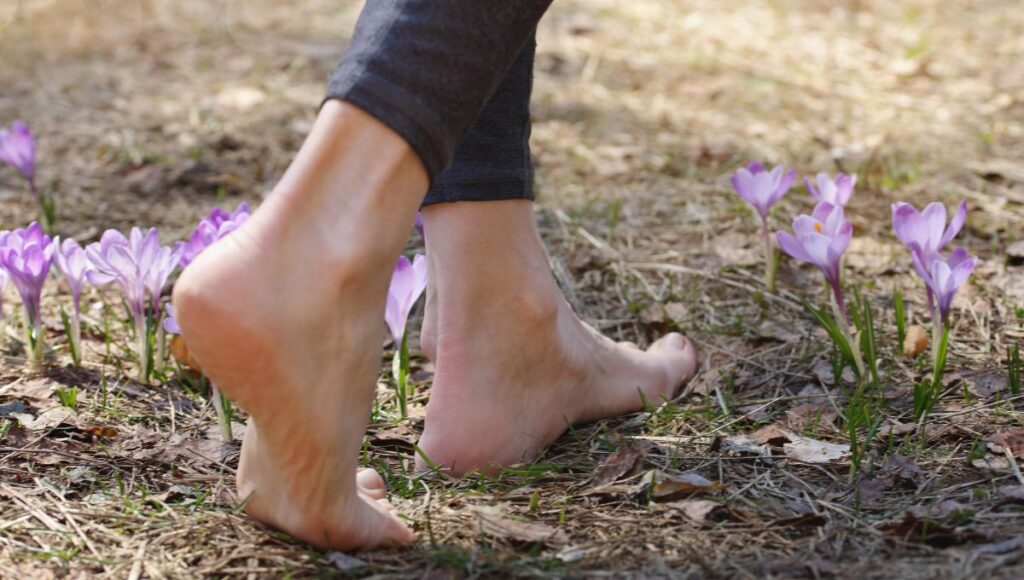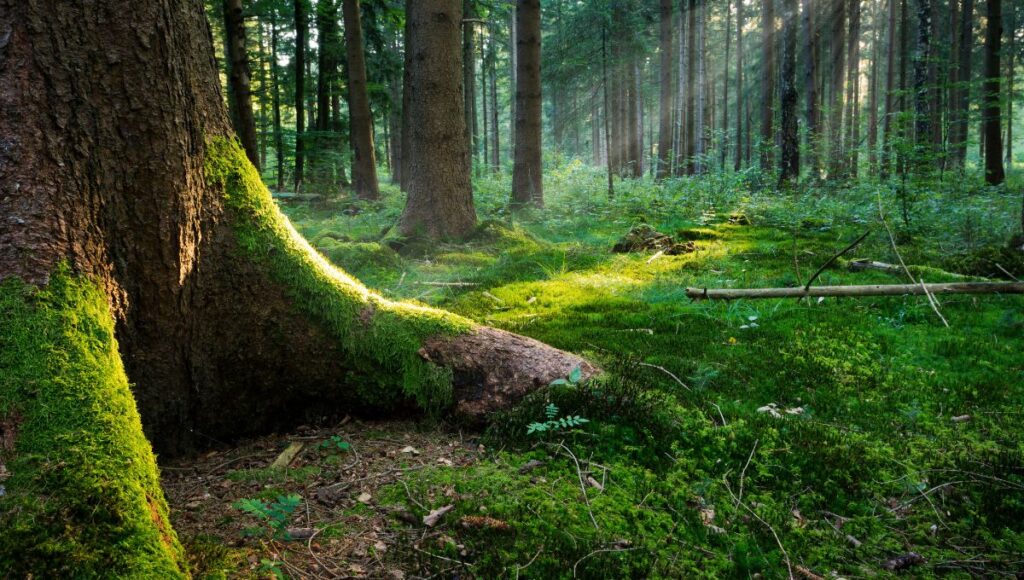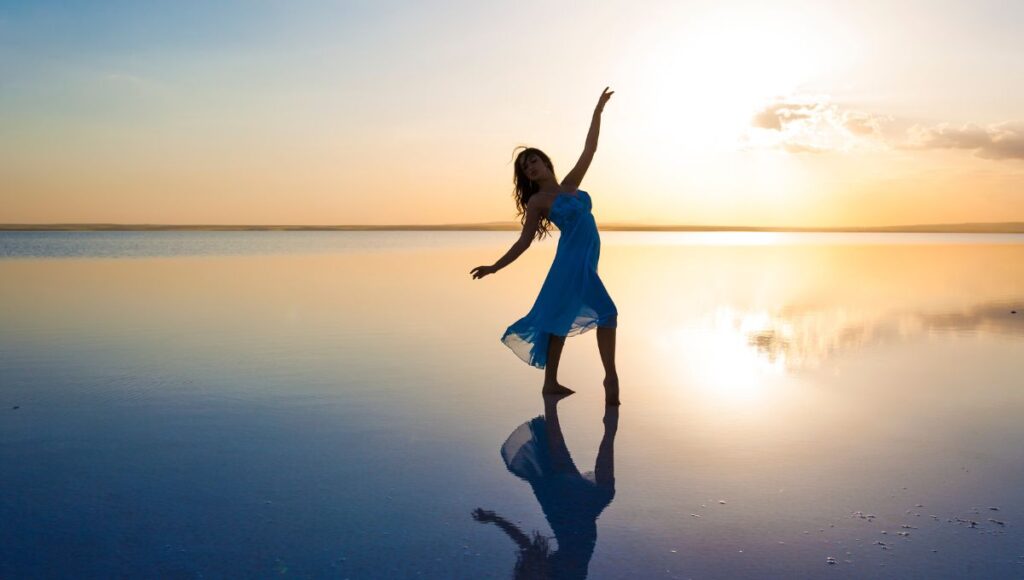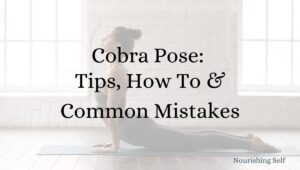
Grounding Techniques: What Are They & 20 Best Techniques For Calm
Grounding techniques, a collection of mindful practices, serve as a bridge to serenity by anchoring us in the present moment.
As we navigate the ebbs and flows of life’s demands, understanding and incorporating these techniques can become invaluable tools for developing a sense of tranquility.
We’ll cover:
- What Are Grounding Techniques?
- How Do Grounding Techniques Work?
- 20 Best Grounding Techniques
What Are Grounding Techniques?
Grounding techniques are a range of practices that can help us feel present, centered, and connected to the world around us. They are especially useful when we find ourselves overwhelmed by stress, anxiety, or intrusive thoughts.
By engaging our senses and focusing on the present moment, grounding techniques can effectively bring us back to reality and alleviate feelings of distress.
Whether it’s using tactile objects, focusing on breathing patterns, or engaging with visual stimuli, these techniques provide effective ways to anchor ourselves in the present moment.

With my own clients, grounding techniques serve as valuable tools within trauma-informed care, designed to help individuals navigate and manage overwhelming emotions, triggers, or dissociative experiences stemming from past traumatic events.
Within a therapeutic setting, they are mindful practices aimed at anchoring individuals in the present and mitigating the potential reactivation of trauma responses.
They provide a means to reconnect with the body, regulate emotions, and establish a sense of safety. These techniques acknowledge that individuals who have experienced trauma may be more prone to dissociation, anxiety, or heightened stress, and they offer practical strategies to manage these challenges.
Practicing grounding regularly can lead to greater emotional resilience and a heightened sense of presence.
How Do Grounding Techniques Work?
Let’s delve into the inner workings of grounding and explore why they are so effective.
Redirecting attention
One fundamental principle behind grounding techniques is their ability to shift our focus from racing thoughts, worries, or traumatic memories to the sensations happening in our body or immediate environment.
By redirecting our attention to the physical sensations we experience in the present moment, grounding helps to anchor us back into reality. These techniques activate our senses, such as touch, sight, smell, taste, and sound, allowing us to engage with our surroundings more fully.
Distraction
Grounding techniques serve as powerful distractions. When we find ourselves caught up in a whirlpool of negative thoughts and emotions, redirecting our attention can offer temporary relief from these overwhelming experiences.
By engaging in activities or exercises that demand our concentration – be it counting objects around us or focusing on deep breathing – we create a mental shift that gives us a break from distressing thoughts. This diversion helps break the cycle of rumination and allows for a sense of calmness to emerge.
Nervous system regulation
Another way grounding works is by regulating our autonomic nervous system (ANS). The ANS controls involuntary bodily functions such as heart rate, blood pressure, digestion, and stress response.
During times of heightened anxiety or trauma triggers, the sympathetic branch of the ANS becomes activated – commonly known as the fight-or-flight response.
Grounding techniques activate the parasympathetic branch instead—the rest-and-digest response—which promotes relaxation and a sense of safety.
This shift helps restore balance within our body and mind. Grounding techniques work by redirecting our attention away from distressing thoughts or memories toward present sensory experiences.

20 Best Grounding Techniques
When it comes to grounding techniques, there are numerous options to choose from.
1. Deep & Mindful Breathing
Take slow, deep breaths in through your nose and out through your mouth. Focus on the sensation of air filling your lungs and emptying them completely.
This simple technique helps regulate your breathing patterns, reducing stress and promoting relaxation. Mindful breathing exercises promote relaxation and help regulate the nervous system, offering a tangible connection to the present moment.
2. Progressive Muscle Relaxation
Start by tensing and then releasing each muscle group in your body one by one.
Begin with your toes, then move up to your legs, abdomen, arms, shoulders, neck, and face. This technique promotes body awareness while releasing tension stored in tight muscles.
3. Mindfulness Meditation
Find a quiet space where you can sit comfortably for a few minutes or more. Close your eyes and focus on your breath or a chosen anchor point (e.g., sounds or bodily sensations).
Whenever thoughts arise, gently acknowledge them without judgment and return to the present moment.
4. Engage Your Senses – 5-4-3-2-1 Technique
Take a moment to notice what is happening around you using all five senses.
You can start by identifying and describing five things seen, four things touched, three things heard, two things smelled, and one thing tasted can shift focus away from distressing thoughts.
Observe the colors in your surroundings, listen closely to the sounds nearby or enjoy some pleasant music, touch different textures nearby such as fabric or nature’s elements like grass or leaves.
5. Grounding Objects
Keep a small object with you that has personal significance or provides comfort when feeling anxious or disconnected from reality.
It could be a smooth stone picked up from a favorite beach or an item gifted by someone special – something that triggers positive emotions when held.
6. Journaling
Write down any racing thoughts or worries that may be overwhelming you at the moment on paper as a way of externalizing them.
This process can help declutter your mind while providing insights into underlying emotions.

7. Guided Imagery
Close your eyes and visualize yourself in a serene, safe place.
It could be a beach, a forest, or any location that brings you peace. Engage all your senses in this mental escape as you explore the details of your chosen space.
8. Grounding Walk
Go for a mindful walk outdoors, paying close attention to the sensation of each step and the connection between your feet and the earth beneath them.
As you walk, observe the natural environment around you – trees, plants, birds – and appreciate their beauty.
9. Yoga or Stretching
Engaging in gentle stretching exercises or practicing yoga can help ground your mind by bringing awareness to physical sensations in your body while promoting flexibility and relaxation.
10. Aromatherapy
Use essential oils like lavender, chamomile, or peppermint to create a calming atmosphere.
Inhale their soothing scents directly from the bottle or diffuse them throughout your space.
11. Coloring
Grab an adult coloring book or print out coloring pages and let yourself get lost in filling them with color.
This creative activity can divert your focus from stressful thoughts while providing an outlet for self-expression.
12. Grounding Foods
Enjoy a healthy meal that includes grounding foods such as root vegetables (carrots, sweet potatoes) or whole grains (brown rice, quinoa).
These foods can promote stability both physically and mentally.
13. Self-Massage
Using gentle pressure with your hands or a massage tool like a foam roller or tennis ball, apply soothing strokes to different parts of your body where tension tends to accumulate – like neck, shoulders, arms – allowing yourself to release built-up stress.
14. Visualization Exercise
Close your eyes and imagine roots growing from the soles of your feet into the ground below you as if connecting with the Earth’s energy. Visualize this grounding force traveling up through these roots into every cell of your body.
15. Digital Detox
Unplug from technology for a specific period each day. This break allows you to disconnect from the constant influx of information and gives your mind a chance to unwind.
16. Dance Therapy
Put on your favorite music and let yourself move freely without any judgment or concern for how you look. Dancing can be an expressive release, helping you reconnect with your body and emotions.

17. Hand Mudras
Mudras are hand gestures used in yoga and meditation to direct energy flow within the body.
Experiment with various mudras, such as Gyan mudra (thumb-tip connecting with index finger-tip) or Vayu mudra (index finger pressing base of thumb), to ground yourself.
18. Nature Connection
Spend time outdoors, immerse yourself in nature, and tune in to its calming rhythms. Take a hike, sit beside a river or lake, or simply observe the beauty of flowers or trees.
19. Listening to Music
Choose soothing instrumental music that resonates with your emotional state. Close your eyes and let the melodies wash over you as you focus on the sounds and rhythms.
20. Emotional Release Techniques
Find healthy ways to release pent-up emotions such as crying, laughing, or screaming into a pillow when needed. Allowing yourself these emotional outlets can help relieve stress and bring about a sense of grounding.
Remember that these grounding techniques may work differently for each individual; therefore, it’s important to experiment and find what works best for you personally.
Conclusion
Incorporating grounding techniques into your daily routine can be incredibly beneficial for your overall well-being.
By engaging with these practices, you have the opportunity to reconnect with yourself, find inner peace, and alleviate stress and anxiety.
Remember that grounding techniques are not a one-size-fits-all solution. It is essential to experiment with different methods and find what works best for you personally.
Don’t feel discouraged if some techniques don’t resonate with you right away; it may take time to discover which ones truly ground and center you. As you continue to incorporate grounding techniques into your daily life, be patient and compassionate with yourself.
The process of reconnecting with yourself takes time and dedication. Embrace the journey and allow yourself to grow through practice.


